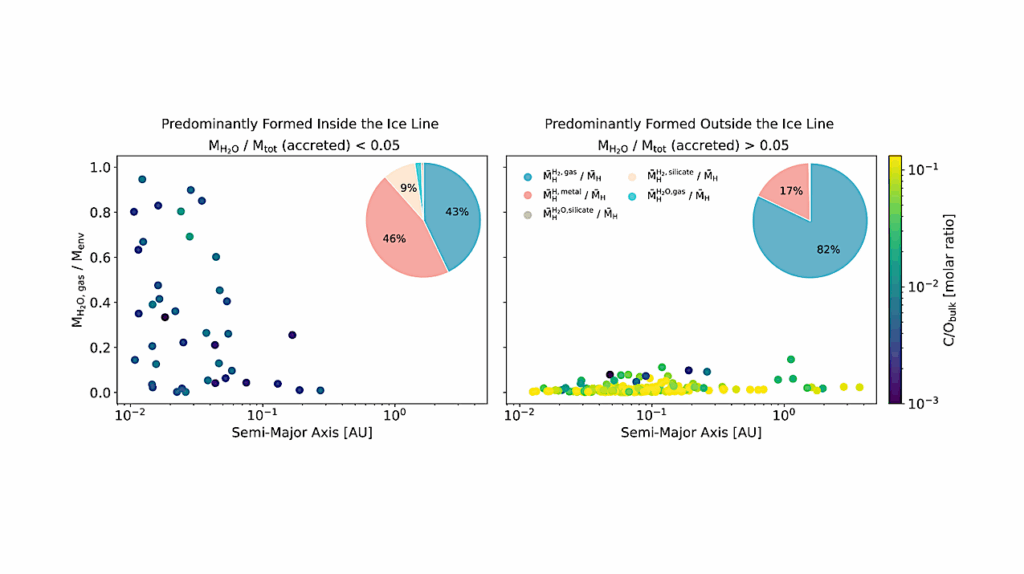A Low-eccentricity Migration Pathway For A 13-h-period Earth Analogue In A Four-planet System

It is commonly accepted that exoplanets with orbital periods shorter than 1 day, also known as ultra-short period (USP) planets, formed further out within their natal protoplanetary disk, before migrating to their current-day orbits via dynamical interactions.
One of the most accepted theories suggests a violent scenario involving high-eccentricity migration followed by tidal circularization. Here, we present the discovery of a four planet system orbiting the bright (V=10.5) K6 dwarf star TOI-500.
The innermost planet is a transiting, Earth-sized USP planet with an orbital period of ∼ 13 hours, a mass of 1.42 ± 0.18 M⊕, a radius of 1.1660.061−0.058 R⊕, and a mean density of 4.89+1.03−0.88 gcm−3. Via Doppler spectroscopy, we discovered that the system hosts three outer planets on nearly circular orbits with periods of 6.6, 26.2, and 61.3d and minimum masses of 5.03 ± 0.41 M⊕, 33.12 ± 0.88 M⊕ and 15.05+1.12−1.11 M⊕, respectively.
The presence of both a USP planet and a low-mass object on a 6.6-day orbit indicates that the architecture of this system can be explained via a scenario in which the planets started on low-eccentricity orbits, then moved inwards through a quasi-static secular migration. Our numerical simulations show that this migration channel can bring TOI-500 b to its current location in 2 Gyrs, starting from an initial orbit of 0.02au. TOI-500 is the first four planet system known to host a USP Earth analog whose current architecture can be explained via a non-violent migration scenario.
Luisa Maria Serrano, Davide Gandolfi, Alexander J. Mustill, Oscar Barragán, Judith Korth, Fei Dai, Seth Redfield, Malcolm Fridlund, Kristine W. F. Lam, Matías R. Díaz, Sascha Grziwa, Karen A. Collins, John H. Livingston, William D. Cochran, Coel Hellier, Salvatore E. Bellomo, Trifon Trifonov, Florian Rodler, Javier Alarcon, Jon M. Jenkins, David W. Latham, George Ricker, Sara Seager, Roland Vanderspeck, Joshua N. Winn, Simon Albrecht, Kevin I. Collins, Szilárd Csizmadia, Tansu Daylan, Hans J. Deeg, Massimiliano Esposito, Michael Fausnaugh, Iskra Georgieva, Elisa Goffo, Eike Guenther, Artie P. Hatzes, Steve B. Howell, Eric L. N. Jensen, Rafael Luque, Andrew W. Mann, Felipe Murgas, Hannah L. M. Osborne, Enric Palle, Carina M. Persson, Pam Rowden, Alexander Rudat, Alexis M. S. Smith, Joseph D. Twicken, Vincent Van Eylen, Carl Ziegler
Comments: Published on Nature Astronomy (April 28th, 2022)
Subjects: Earth and Planetary Astrophysics (astro-ph.EP)
Cite as: arXiv:2204.13573 [astro-ph.EP] (or arXiv:2204.13573v1 [astro-ph.EP] for this version)
Journal reference: Serrano, L.M., Gandolfi, D., Mustill, A.J. et al. A low-eccentricity migration pathway for a 13-h-period Earth analogue in a four-planet system. Nat Astron (2022). https://doi.org/10.1038/s41550-022-01641-y
Related DOI:
https://doi.org/10.1038/s41550-022-01641-y
Focus to learn more
Submission history
From: Luisa Maria Serrano
[v1] Thu, 28 Apr 2022 15:36:48 UTC (5,915 KB)
https://arxiv.org/abs/2204.13573
Astrobiology








